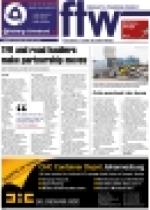Intra-Asia lanes provide some grounds for optimism
Airfreight has
been a misery
in the main air
trade lanes,
according to the Londonbased
transport analysts,
Drewry.
However, the intra-Asian
and African air cargo trade
lanes were relatively happy
affairs.
The supply and demand
fundamentals of the
airfreight market have now
deteriorated to such an
extent that Drewry recently
revealed that rates across
major lanes had fallen to the
lowest level since it started
tracking the market back in
2012.
Even worse, although
the peak season may give
a minor boost, many
executives now believe
low utilisation rates, weak
demand in some markets,
and an excess of bellyhold
capacity could consign
the sector to a long-term
downturn – or one that at
least stretches into 2016.
Observers pointed out
that the Transpacific lane
from Asia into the US had
been slowly tapering down
after benefiting earlier
in the year from ocean
congestion linked to the
now-resolved West Coast
port labour dispute.
So growth on that route
was strong for the first
four months of the year.
But, as the West Coast
port operations got back to
normal, it resulted in less
conversion of ocean to air
shipments.
The Transpacific peak
this year is also predicted to
be shorter and smaller
based on current market
sentiments.
The Asia to Europe
lane is a mainstay for
many freighter operators.
But overall demand on
the lane is slow and the
poor economic outlook for
many European countries
has made it hard to be
optimistic.
No major increase in
volume is anticipated,
except for
the October
to November
periods due
to the holiday
seasons. And,
with capacity
in terms of
freighters,
having been
introduced
into Europe
by the Middle
Eastern and
Chinese
carriers, this will definitely
have an impact on the
overall rates situation if
available capacity exceeds
demand.
In summary, rates will
remain low and move up
slightly during peak seasons.
However, intra-Asia lanes
are providing some grounds
for optimism, with the Asia
Pacific region the only one
to maintain
consistent
volume growth
this year,
according to
Drewry stats.
Also,
according
to the
International
Air Transport
Association
(Iata), African
carriers
experienced
growth this August compared
to last year. Volumes grew
2.4% in terms of freight
tonne kilometres (FTKs). But
capacity – in terms of available
freight tonne kilometres
(AFTKs) - rose by 11.3%, so
load factors were not so good.
INSERT
Rates across major
lanes have fallen
to the lowest level
since Drewry started
tracking the market
back in 2012.

